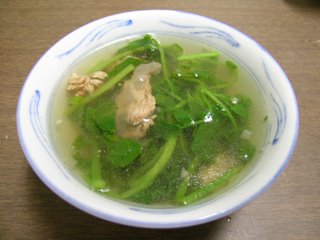
Serves 4. Published January 1, 2008. From Cook's Illustrated.
This recipe was developed using natural pork, but enhanced pork (injected with a salt solution) will work as well. If using enhanced pork, eliminate the brining in step 1. The bread crumb mixture can be prepared through step 2 up to 3 days in advance. The breaded chops can be frozen for up to 1 week. They don't need to be thawed before baking; simply increase the cooking time in step 5 to 35 to 40 minutes.
Ingredients
| Table salt | |
| 4 | center-cut boneless pork chops , 6 to 8 ounces each, 3/4 to 1 inch thick, trimmed of excess fat |
| 4 | slices hearty white sandwich bread , torn into 1-inch pieces |
| 1 | small minced shallot (about 2 tablespoons) |
| 3 | medium garlic cloves , minced or pressed through garlic press (about 1 tablespoon) |
| 2 | tablespoons vegetable oil |
| Ground black pepper | |
| 2 | tablespoons grated Parmesan cheese |
| 1/2 | teaspoon minced fresh thyme leaves |
| 2 | tablespoons minced fresh parsley leaves |
| 1/4 | cup unbleached all-purpose flour plus 6 tablespoons |
| 3 | large egg whites |
| 3 | tablespoons Dijon mustard |
| Lemon wedges |
Instructions
1. Adjust oven rack to middle position and heat oven to 350 degrees. Dissolve 1/4 cup salt in 1 quart water in medium container or gallon-sized zipper-lock bag. Submerge chops, cover with plastic wrap, and refrigerate 30 minutes. Rinse chops under cold water and dry thoroughly with paper towels.
2. Meanwhile, pulse bread in food processor until coarsely ground, about eight 1-second pulses (you should have about 3 1/2 cups crumbs). Transfer crumbs to rimmed baking sheet and add shallot, garlic, oil, 1/4 teaspoon salt, and 1/4 teaspoon pepper. Toss until crumbs are evenly coated with oil. Bake until deep golden brown and dry, about 15 minutes, stirring twice during baking time. (Do not turn off oven.) Cool to room temperature. Toss crumbs with Parmesan, thyme, and parsley.
3. Place 1/4 cup flour in pie plate. In second pie plate, whisk egg whites and mustard until combined; add remaining 6 tablespoons flour and whisk until almost smooth, with pea-sized lumps remaining.
4. Increase oven temperature to 425 degrees. Spray wire rack with nonstick cooking spray and place in rimmed baking sheet. Season chops with pepper. Dredge 1 pork chop in flour; shake off excess. Using tongs, coat with egg mixture; let excess drip off. Coat all sides of chop with bread crumb mixture, pressing gently so that thick layer of crumbs adheres to chop. Transfer breaded chop to wire rack. Repeat with remaining 3 chops.
5. Bake until instant-read thermometer inserted into center of chops registers 150 degrees, 17 to 25 minutes. Let rest on rack 5 minutes before serving with lemon wedges.
The 30-Minute Brine
You might be tempted to skip the brining step when preparing Crunchy Baked Pork Chops. Don't. Center-cut chops are quite lean, and left untreated they will be very dry and chewy, even when cooked to medium (an internal temperature of 150 degrees). The salt in the brine changes the structure of the muscle proteins and allows them to hold on to more moisture when exposed to heat. My tasters had no trouble picking out the chops that I had brined versus chops that I had left untreated.
If you're accustomed to brining a turkey for the holidays, you might think you don't have time to brine pork chops for a weeknight recipe like this. But I found that making the brine super-concentrated (with 1/4 cup of table salt dissolved in 1 quart of water) gets the job done in just 30 minutes-the time it will take you to prepare the fresh bread crumb coating. And my potent brine fits, along with four chops, in a medium container or gallon-sized zipper-lock bag. No brining bucket needed.
One exception: If you've purchased enhanced chops injected with a salt solution, don't brine them. The injected solution will make the chops moist, even spongy, and brining will make the meat way too salty. We prefer the flavor of natural chops and find that 30 minutes in a strong brine makes them plenty juicy.











